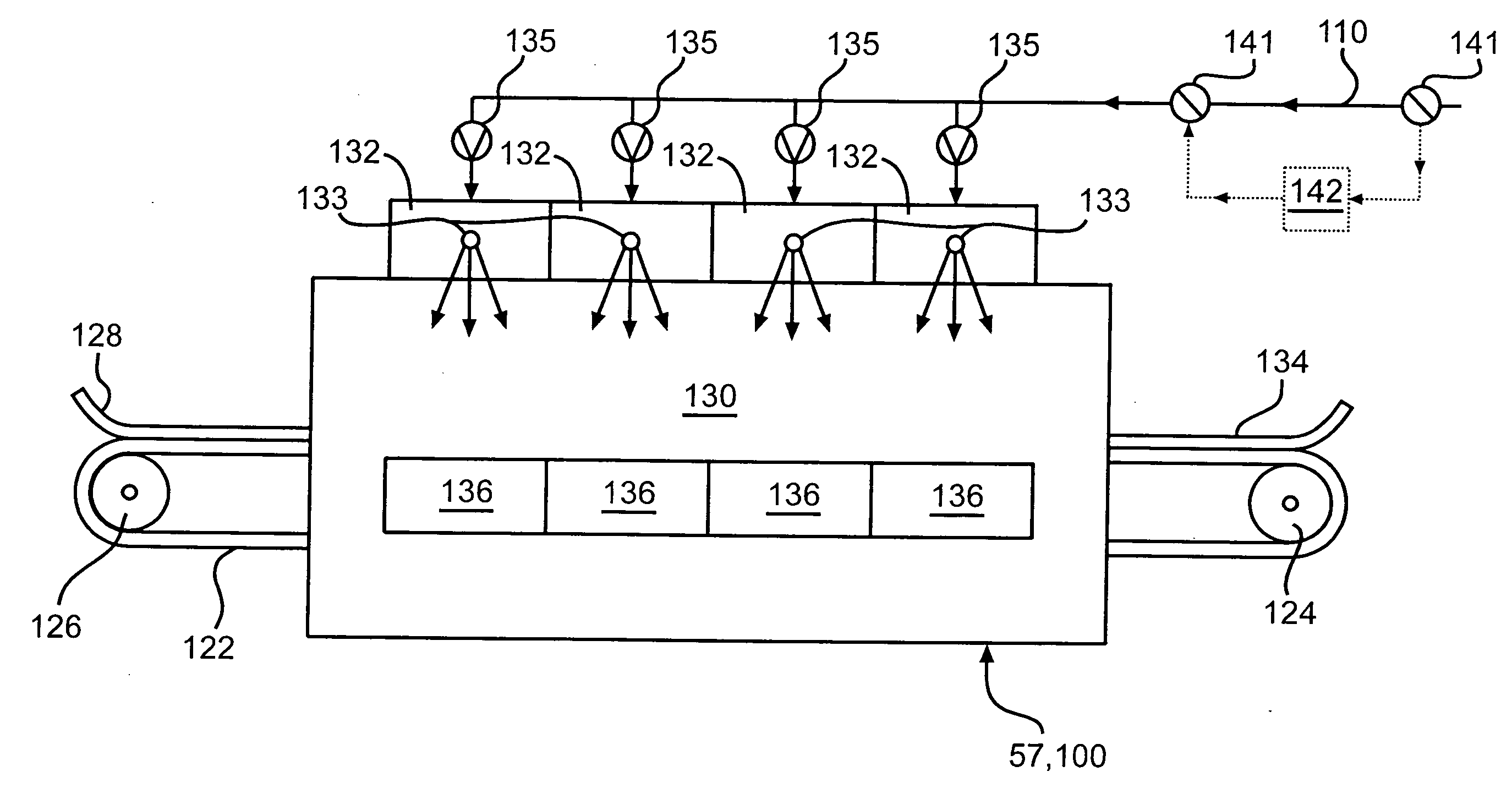Method of drying mat products
- Summary
- Abstract
- Description
- Claims
- Application Information
AI Technical Summary
Benefits of technology
Problems solved by technology
Method used
Image
Examples
Embodiment Construction
[0013]It is known to make reinforcing nonwoven mats from glass fibers and to use these mats as substrates in the manufacture of a large number of roofing and other products. Any known method of making nonwoven mats can be used in this invention, such as the conventional wet laid processes described in the U.S. patents referenced above in the Background. In a typical one of these processes a slurry of glass fiber is made by adding glass fiber to a typical white water in a pulper to disperse the fiber in the white water and to form a slurry having a fiber concentration of about 0.2-1.0 weight %, metering the slurry into a flow of white water to dilute the fiber concentration to 0.1 wt. percent or less, and continuously depositing this mixture onto a moving screen forming wire to dewater and form a wet nonwoven fibrous mat containing a relatively high moisture content usually in the range of at least about 10 wt. percent to at least about 50 wt. percent.
[0014]FIG. 1 is a schematic of a...
PUM
| Property | Measurement | Unit |
|---|---|---|
| pressure | aaaaa | aaaaa |
| pressure | aaaaa | aaaaa |
| permeability | aaaaa | aaaaa |
Abstract
Description
Claims
Application Information
 Login to View More
Login to View More - R&D
- Intellectual Property
- Life Sciences
- Materials
- Tech Scout
- Unparalleled Data Quality
- Higher Quality Content
- 60% Fewer Hallucinations
Browse by: Latest US Patents, China's latest patents, Technical Efficacy Thesaurus, Application Domain, Technology Topic, Popular Technical Reports.
© 2025 PatSnap. All rights reserved.Legal|Privacy policy|Modern Slavery Act Transparency Statement|Sitemap|About US| Contact US: help@patsnap.com



